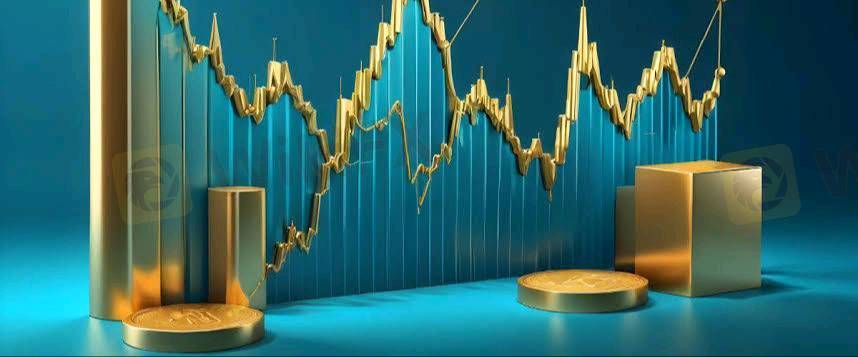
2025-02-05 06:59
업계The Role of Central Banks and Government Stimulus
#firstdealofthenewyearFateema
The Role of Central Banks and Government Stimulus on Inflation.
Central banks and government stimulus measures play a significant role in influencing inflation through their impact on money supply, interest rates, and economic growth expectations. Understanding their actions and policies is crucial for investors seeking to manage inflation risks and opportunities in their portfolios, including the potential role of gold as an inflation hedge.
Central Banks' Role in Influencing Inflation
Monetary Policy: Central banks use monetary policy tools, such as setting benchmark interest rates and conducting open market operations, to influence the cost of borrowing, economic growth, and inflation. Lower interest rates stimulate economic activity and can lead to higher inflation, while higher interest rates can curb inflationary pressures by dampening demand.
Quantitative Easing (QE): Central banks may also resort to unconventional measures like QE, which involves purchasing large amounts of government bonds and other assets to inject liquidity into the economy. While QE aims to boost economic growth, it can also fuel inflation by increasing the money supply.
Government Stimulus and Its Impact on Inflation
Fiscal Policy: Governments use fiscal policy tools, such as changes in government spending and taxation, to influence aggregate demand and economic growth. Expansionary fiscal policies, like increased government spending or tax cuts, can stimulate economic activity and inflation, while contractionary policies can have the opposite effect.
Government Debt and Deficits: Large-scale government stimulus measures can lead to increased government debt and fiscal deficits. High levels of debt may raise concerns about a country's fiscal sustainability and could result in inflationary pressures if investors demand higher yields on government bonds or if central banks monetize the debt through QE.
In a post-COVID economy, central banks and governments worldwide have implemented aggressive stimulus measures to support economic recovery. While these measures aim to mitigate the pandemic's negative impact, they may also fuel inflationary pressures. Investors should closely monitor policy developments and their potential effects on currency values and inflation to make informed decisions about their portfolio strategies, including the potential role of gold as an inflation hedge.
좋아요 0
FX7315030252
ट्रेडर
인기있는 콘텐츠
시장 분석
투자주체별매매 동향
시장 분석
유로존 경제 쇠퇴 위기 직면
시장 분석
국제 유가는 어디로
시장 분석
미국증시 레버리지(Leverage)·인버스(Inverse)형의 ETF, 최근 사상 최대 신
시장 분석
투기장 된 원유 ETL...첫 투자위험 발령
시장 분석
RBNZ 양적완화 확대
포럼 카테고리

플랫폼

전시회

IB

모집

EA

업계

시세

인덱스
The Role of Central Banks and Government Stimulus
 이집트 | 2025-02-05 06:59
이집트 | 2025-02-05 06:59#firstdealofthenewyearFateema
The Role of Central Banks and Government Stimulus on Inflation.
Central banks and government stimulus measures play a significant role in influencing inflation through their impact on money supply, interest rates, and economic growth expectations. Understanding their actions and policies is crucial for investors seeking to manage inflation risks and opportunities in their portfolios, including the potential role of gold as an inflation hedge.
Central Banks' Role in Influencing Inflation
Monetary Policy: Central banks use monetary policy tools, such as setting benchmark interest rates and conducting open market operations, to influence the cost of borrowing, economic growth, and inflation. Lower interest rates stimulate economic activity and can lead to higher inflation, while higher interest rates can curb inflationary pressures by dampening demand.
Quantitative Easing (QE): Central banks may also resort to unconventional measures like QE, which involves purchasing large amounts of government bonds and other assets to inject liquidity into the economy. While QE aims to boost economic growth, it can also fuel inflation by increasing the money supply.
Government Stimulus and Its Impact on Inflation
Fiscal Policy: Governments use fiscal policy tools, such as changes in government spending and taxation, to influence aggregate demand and economic growth. Expansionary fiscal policies, like increased government spending or tax cuts, can stimulate economic activity and inflation, while contractionary policies can have the opposite effect.
Government Debt and Deficits: Large-scale government stimulus measures can lead to increased government debt and fiscal deficits. High levels of debt may raise concerns about a country's fiscal sustainability and could result in inflationary pressures if investors demand higher yields on government bonds or if central banks monetize the debt through QE.
In a post-COVID economy, central banks and governments worldwide have implemented aggressive stimulus measures to support economic recovery. While these measures aim to mitigate the pandemic's negative impact, they may also fuel inflationary pressures. Investors should closely monitor policy developments and their potential effects on currency values and inflation to make informed decisions about their portfolio strategies, including the potential role of gold as an inflation hedge.
좋아요 0
나 도 댓 글 달 래.
제출
0코멘트

댓글이 아직 없습니다. 첫 번째를 만드십시오.

제출
댓글이 아직 없습니다. 첫 번째를 만드십시오.